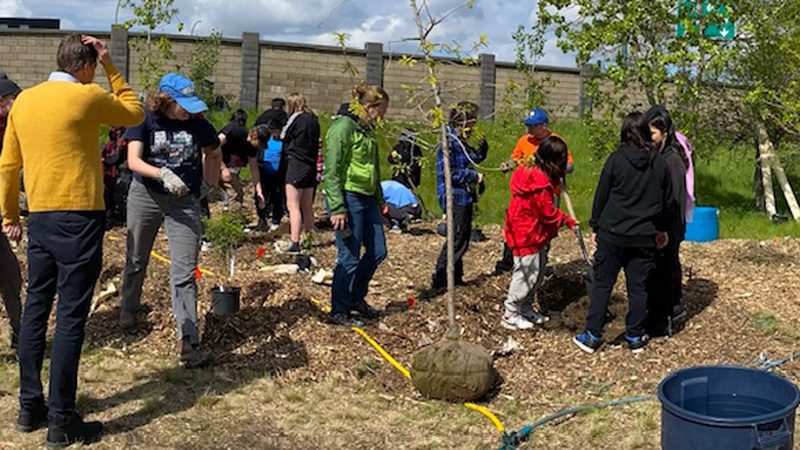Proper Tree Planting
Most plants are sold in either containers or as B & B (balled and burlapped), meaning their roots are contained in a 'ball' and covered with burlap. Larger trees and shrubs are often available only as 'B & B'.
STEP 1. Dig a hole 2 or 3 times the size of the root ball or container, but no deeper than the root ball height. Scatter some bone meal into the hole and fill with water. For trees and shrubs, use Myke's growth supplement or another brand of mycorrhizae fungi sprinkled lightly in the hole or added to the water, as per instructions on the package. These three things ensure that essential nutrients and moisture are easily accessible to the plant at the root level immediately after planting. (Mycorrhizae fungi form a network of filaments that associate with plant roots and draw nutrients from the soil that the root system would not be able to access efficiently otherwise. This fungus-plant alliance stimulates plant growth and accelerates root development.) Rarely will you need to modify the existing soil, as the plant roots will grow well beyond the planting hole within the first several years. For trees planted in a predominately clay soil, acidic soil, or alkaline soil, the backfill soil may need to be modified to give the tree or shrub a better chance of becoming established within the first several years. The existing soil type might also determine your selection of tree or shrub as some are more tolerant or suitable to your soil type.
Drawings show the correct planting of a tree or shrub:

STEP 2. As the water soaks into the ground, tip the plant container slightly and gently remove the plant. You may have to tap around the container to loosen the root ball from the container sides. In stubborn cases, you may have to cut the container to remove the plant. If the plant is B & B, untie and remove all burlap and twine or wire.
STEP 3. Place the entire root ball in the hole with the top of the root ball at grade level and water.
STEP 4. Once the water has soaked into the hole backfill with the existing soil from the excavation. You may need to backfill in several stages and tamp the soil firmly to remove any air pockets.
